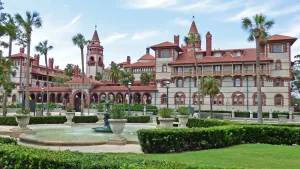
St. Augustine, Florida – Florida’s Historic Coasts
St. Augustine, Florida – Florida’s Historic Coasts TLDR: Population: 18,118 Situation: From the European to the Modern era, St. Augustine has
Population: 2,411
Situation: The town, after trying to be named “Santa Fe” and finding out that was taken chose Santa Claus as the town name. Shortly after, messages addressed to Santa Claus would be routed to the city starting their creative City Development.
Action: They have themed their whole town around Santa Claus.
Result: Major investors like Marcus Lemonis are investing in the businesses of the town because he branding is so strong!
Santa Claus, Indiana was brought to my attention by the TV show, The Profit. Marcus Lemonis, the TV shows billionaire entrepreneur, was interested in the toy business located in SANTA CLAUS, Indiana! A little background, Marcus Lemonis is a self made Billionaire who turns around second generation businesses to be successful and sustainable. He saw an opportunity in Santa Claus, Indiana just like the original owners. Unlike most businesses on the show, this business toy business was making a profit. A second smaller testament to the power of a niche city. The local lodging and theme park is christmas themed as well, all signs point to a profitable niche city.

In 1856 the town originally contacted the US Postal Service wanting to be named Santa Fe. The US Postal Service replied with that Santa Fe was already taken and they would need to find another name. The town deliberated. Most of what happened here is a myth but what we do know is that by the end of deliberation with the US Postal Service, the place in been named Santa Claus, Indiana.
About 1928 the Postmaster General takes notice in this Christmas-themed niche City. People from around the country started sending mail addressed to Santa Claus and it all starts piling up in Santa Claus, Indiana. that’s when the town hits national or at least Regional recognition for being Christmas-themed. From they’re the entrepreneurial opportunities blossomed.
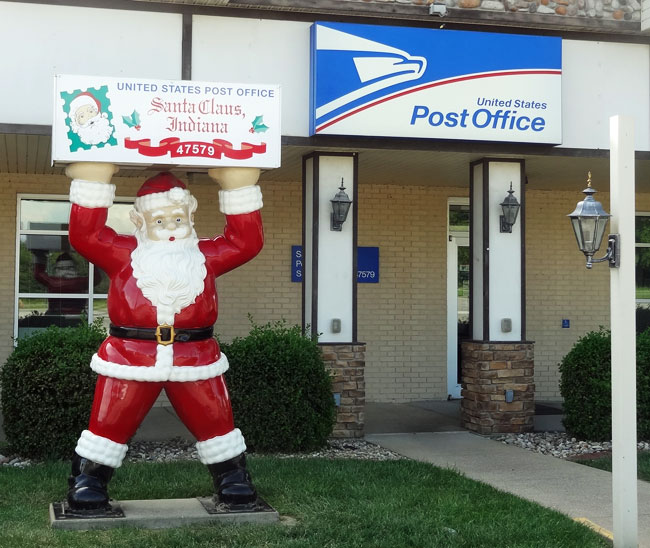
Milt Harris was the first to capitalize on the name of the town after Ripley’s believe it or not featured it in an article. Milt Harris created Santa’s Candy Castle The first tourist attraction in Santa Claus, Indiana in 1935. The success of its launch led to an expansion a year later of the “Toy Village” with a half-dozen miniature fairytale buildings each sponsor to look like a different toy manufacturer. Santa’s Workshop was also added where someone playing Santa would hand craft wood toys. Milt Harris really ran with and created a name for himself.
The towns named alone allowed it to become a viable brand to toys manufactures. A more recent example of a town with corporate sponsorships is Devon, Alberta because of their cities bike theme. Many business would send out their mail order catalogues through Santa Claus, Indiana for the name. Toys were stamped with the Santa Claus seal of approval and marked with the town’s famous address.
Milt’s rival, Carl Barrett created Santa Claus Park in 1935 with a 22 foot concrete statue of Santa Claus which is there to this day. This lead to a theme of santa claus’s through town.
Santa Claus, Indiana was also home the first theme park open by Louis Koch, an Evansville entrepreneur, which was of course called, yes, “Santa Claus Land”. It has been renamed since but this theme park alone brings in over a million people a year people.
There are many other side attractions that spring up like Santa Claus’s Christmas store, Museum, Stables, and of course the toy store featured on Marcus Lemonis’s “The Profit” – “Santa’s toys.
The theme park and the other Christmas-themed stores shops and other efforts then lead to more customers for the more ancillary businesses like gas stations, restaurants and hotels. There is a reason a world class entrepreneur like Marcus Lemonis invest in a small toy store. The town is nice.It attracts specific clientele. There are numerous ways to capitalize on it. I will leave you with a quote from Marcus, “The best way to get someone to buy something is to make them fall in love with it”. If you want people to move to your city. If you want people to visit your city, you need to get people to fall in love.

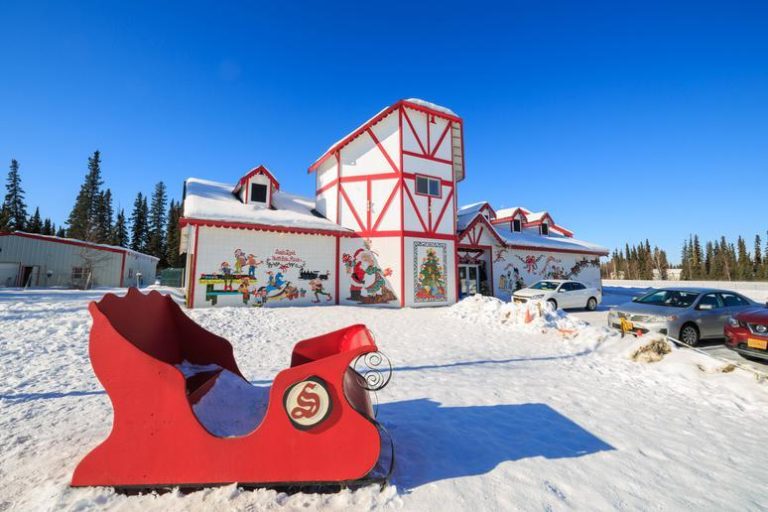

St. Augustine, Florida – Florida’s Historic Coasts TLDR: Population: 18,118 Situation: From the European to the Modern era, St. Augustine has
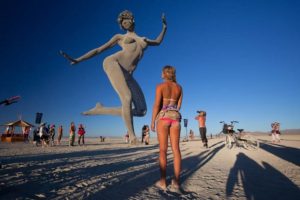
– Feed The Burning Man Fire 07-Babe-and-Dancer-Sculpture-at-Burning-Man 636396865741089215-Burning-Man-1 SCOTT_LONDON_2018_0078-1-665×375 web1_gerlach_082316db_008_6902569 57156351_633707353709527_116516676853431328_n gerlach images (2) images san-leandro-2_750xx5639-3178-0-322 shanina web1_gerlach_082316db_015_6902569 Dystopian Festival
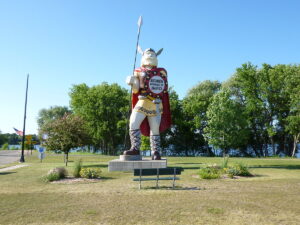
Alexandria, MN – The Big Ole & The Runestone TLDR: Situation: Alexandria, MN, a city with a unique Scandinavian heritage,